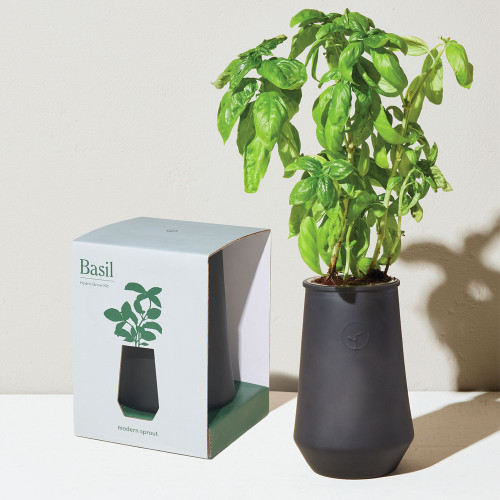If you are looking to cultivate fresh produce all year round, indoor growing is an excellent way to start. It is sometimes assumed that homegrown produce falls short of outdoor efforts due to less ideal weather. While common culinary herbs such as basil, cilantro, mint, and oregano often flourish in small kitchen pots, there is an expectation that their productivity will dwindle during the colder seasons due to limited sunlight.
With the correct indoor gardening supplies and carefully selected plant variations, however, it is entirely possible to create a bountiful indoor sanctuary. The key is to learn the essential requirements of successful growing systems. This includes making sure you have the correct lights, containers, and growing medium. Once that’s in place, you have the perfect recipe for starting an indoor gardening project.
So what do these supplies look like? Providing the necessary light for photosynthesis includes artificial sources like fluorescent, LED, or HID lights. For suitable containers, choose pots, grow bags, or hydroponic systems. Growing mediums that carefully support plant roots and provide essential nutrients include soil, coconut coir, hydroponic solutions, and aeroponic systems.
Understanding indoor gardening systems
Once you have the required supplies, you'll need to create the ideal growing space. This may include selecting suitable grow cabinets or sunny rooms in your home. Any enclosed area in which you can regulate the environment, including a basement corner or a spare room, can serve as an appropriate growing space. Creating a grow closet is generally the most cost-effective DIY alternative. To enhance light efficiency, you may consider lining your walls with reflective materials such as foil. This can largely maximize the effectiveness of fluorescent grow lights.
Building a hydroponic grow cabinet will be a slightly larger project but may see even more satisfying results. This system integrates lighting, nutrient delivery, and ease of use into a single unit, providing a superior environment for plant and vegetable growth.
Greenhouse extensions and sunrooms are prime choices if you want to reduce your energy consumption as they provide passive solar heating. Your home will be flooded with an abundance of natural light during winter and they may also induce heat.
Sunrooms are beneficial to plants because they often have higher humidity levels. Window sill gardens are a relatively low-maintenance option and the plants help to improve indoor air quality by eliminating pollutants.
Choosing what to grow indoors
There are numerous options when deciding which varieties of plants you would like to grow in your home. Many indoor garden kits can point you in the right direction when making this decision. If you are looking to develop delicious homegrown greens and herbs, basil and mint are versatile. They also add delightful aromas to your home. Parsley and oregano are also classic garnishes if you like Italian or Mediterranean cuisines.
Microgreens are popular right now and a fast option with a typical cycle requires around 8-14 days. To ensure healthy development, fertilize them once a week using a water-soluble nutrient solution. Search for pre-mixed seeds that offer a hybrid of flavors, like basil, kale, mustard, peas, radish, arugula, and spinach.
Choosing grow lights
Plants only flourish when exposed to a full spectrum of light. Standard grow lights may appear white, however, they emit a variation of colors that are vital for growth. Blue light promotes chlorophyll production, germination, and root development.
Red light is perfect for regulating plant growth and encouraging flowering and fruiting. Green light is an effective optimizer of photosynthesis. The majority of plants thrive under standard full-spectrum grow lights. More advanced models allow you to adjust the color balance between warm and cool to customize for a specific plant's needs. LED bulbs last five times longer than most others, making them the most efficient and effective.
They are a reliable, sustainable and non-toxic addition to your indoor gardening supplies. For general lighting, select full-spectrum LED bulbs and for specific plant needs, opt for red-blue light combinations. When making choices about a grow light, observe its coverage area. For LED lights, this is usually measured in lumens per square meter, lux, or foot-candles.
Best grow lights for seedlings and starter plants
For seedlings and starter plants, it’s important to choose top-notch grow lights from an indoor garden supply store like Eartheasy. Plants which absorb full sunlight outdoors need around 2000-3000 lumens indoors right from the start. Choose a full-spectrum LED bulb or one which provides a blue bias.
Hang your grow light as close as possible to your plants to ensure the full benefits are reached. As LED bulbs don't overheat they won’t damage any delicate fresh seedlings. When plants are not grown under high-intensity light, they can grow tall and spindly, so keeping the LEDs close ensures bushier and healthier development.
Indoor gardening supplies for best growth
In conclusion, indoor gardening can be highly rewarding. It is a sustainable way to cultivate fresh homegrown produce all year-round. Introducing the beauty of nature into your home can be a fulfilling experience, as well as a healthy hobby. Indoor gardening supplies offer a wide range of options if you are committed to giving the necessary care to harvesting fresh vegetables and plants.






